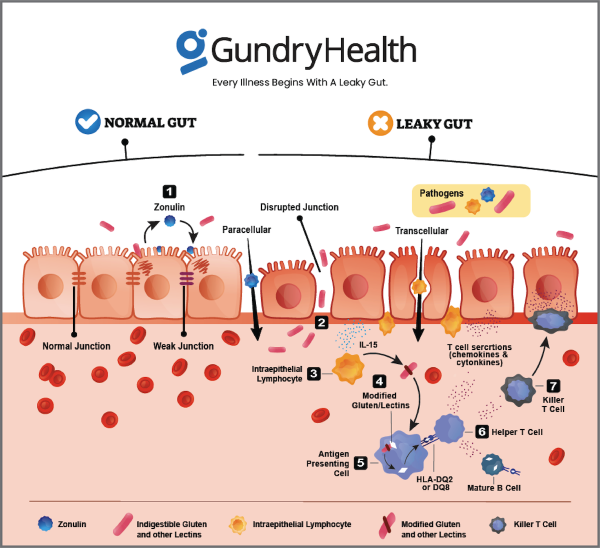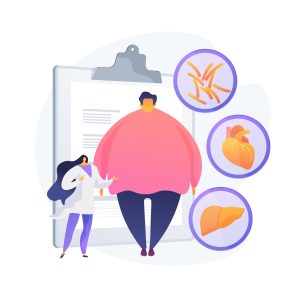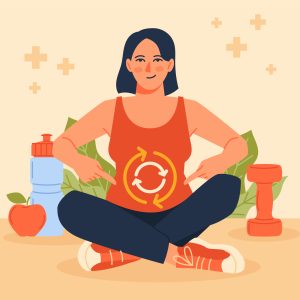Ankylosing Spondylitis (AS)
Ankylosing spondylitis (AS) is believed to be an autoimmune disorder, which means that the body’s immune system attacks its own healthy tissues. The disease is more common and more severe in men. It often runs in families. Early symptoms include back pain and stiffness. These problems often start in late adolescence or early adulthood.
In Ankylosing spondylitis (AS), the immune system targets the joints between the vertebrae in the spine, causing inflammation and eventually leading to the fusion of the vertebrae. This can result in a loss of mobility and flexibility in the spine, as well as chronic pain and stiffness. AS can also affect other joints such as the hips, knees, and shoulders.
AS belongs to a group of diseases known as spondyloarthropathies. Research shows that between three and 13 out of 1,000 Americans have one of these diseases.
Ankylosing spondylitis symptoms
The development of ankylosing spondylitis (AS) is gradual and slow. Symptoms may develop over several months even years. Diagnosing ankylosing spondylitis AS can be difficult because the symptoms may come and go, and they may improve as the time goes or in most cases get worse.
Most common symptoms include;
- Back pain and stiffness – These are usually main symptoms of AS. You may experience that the pain and stiffness is worse in the morning and night and this pain may wake you up regularly during the night. Pain around the buttocks is another symptom patients experience. During an exercise the pain may subside, but it comes back or gets worse with the rest.
- Fatigue – This is another common symptom of ankylosing spondylitis (AS). It can make patients feel tired and lacking energy.
- Enthesitis – Enthesitis is a very painful inflammation at the place where a tendon or a ligament and bone is joined. It can affect the top of the shin bone, under and behind the heel, ribs and breast bone joint. The patient may experience chest pain, difficulty breathing if ribs are affected.
- Arthritis – AS can cause inflammation of the joints in other parts of the body such as hips and knees. Patients experience pain while moving in affected joints, tenderness when examining the affected joints, swelling and warmth in the affected area.
- Ankylosis (Fused vertebrae) – Some people affected by AS eventually become severely disabled as a result of the bones in their spine fusing in a fixed position.
Diagnosing Ankylosing spondylitis (AS)
Diagnosing Ankylosing spondylitis (AS) can be difficult and time consuming. This is mostly because the disease develops slowly and there is no definitive AS test. Ankylosing spondylitis shares many of the same symptoms that other autoimmune diseases share. Doctor will ask what symptoms the patient is experiencing and the timeframe of how long they’ve had them. Blood test will be recommended to check for sings of inflammation in the patient’s body. If the results show inflammation the patient will be referred to a rheumatologist for further diagnosing and tests. A rheumatologist will carry out imaging tests to examine patient’s spine and pelvis, as well as further blood tests. An X-ray, a MRI scan and an ultrasound scan may be required. In some cases a genetic blood test may be required to see if a patient carries HLA-B27 gene variant, which is found in most people with AS.
Ankylosing spondylitis treatment
Ankylosing spondylitis (AS) treatments involve a combination of exercise, physical therapy, medicine and diet.
- Exercise and Physical therapy – Your doctor may prescribe an individual and group exercise regime. These usually involve land and water sports. Most patients find daily stretching very helpful.
- Medicine – Doctors often prescribe Non-steroidal anti-inflammatory drugs (NSAIDs) such as Ibuprofen, Naproxen and Diclofenac for pain management. These types of medications may relieve some pain, but using them may complicate the AS symptoms and lead to a condition called “Leaky Gut” which can lead to even more Autoimmune Diseases.
Diet – New researches show that healthy Lectins free diet help reduce Ankylosing spondylitis (AS) symptoms and inflammation. A 2017 review Trusted Source indicates that a diet high in these essential fats has a consistent but modest positive effect on joint inflammation associated with RA.
The following foods are good sources of omega-3 fatty acids:
- Fatty fish, such as salmon, sardines, and tuna
- Flaxseed
- Flaxseed oil
- Walnuts
- Calcium-rich foods
AS weakens the bones, which is why calcium-rich foods are so important. Calcium is essential for improving Trusted Source bone strength.
Food sources high in calcium include:
- Dark leafy greens, such as watercress and kale
- Broccoli
- Fortified plant milks
- Blanched almonds
- Canned sardines with bones
- Chinese cabbage
- Vitamin D
- Vitamin D allows the body to absorb calcium and is another vital nutrient for healthy bones.
One 2015 review Trusted Source reports that higher levels of vitamin D are associated with a lower risk of developing AS. Also, people with higher vitamin D levels are less likely to have symptoms related to the condition.
The body gets vitamin D from sun exposure and foods such as:
- Fish and seafood
- Egg yolk
- Cod liver oil
- Vitamin D supplements
For more acceptable Lectins free diet options click YES/NO Food list.







